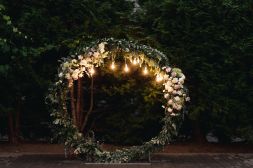How to Choose the Best Materials for Your DIY Bunting and Banners
Creating your own bunting and banners is a fun and creative way to add a personal touch to any celebration or event. Whether you’re planning a birthday party, wedding, or seasonal decoration, choosing the right materials is essential for making your DIY project both beautiful and durable. In this article, we will guide you through the process of selecting the best materials for your bunting and banners, ensuring that your creations stand out.
Understanding Different Fabric Options
When choosing fabric for your bunting and banners, consider the event’s theme and location. Cotton is a popular choice due to its versatility and ease of handling. It’s available in countless colors and patterns, making it ideal for festive occasions. For outdoor events, opt for weather-resistant fabrics like polyester or canvas which can withstand wind and rain without fading.
Exploring Paper Alternatives
If you’re looking for an economical option, paper can be an excellent choice. You can use cardstock or scrapbook paper in various colors to create vibrant designs that are lightweight yet eye-catching. Additionally, consider using recycled paper as an eco-friendly option that adds texture while being budget-friendly.
Choosing the Right String or Ribbon
The string or ribbon you select will affect not only the aesthetics but also the functionality of your bunting. Twine gives a rustic feel while satin ribbons add elegance to formal events. Make sure whatever you choose can support the weight of your fabric or paper pieces without sagging.
Selecting Additional Decorative Elements
To enhance your banners further, think about incorporating embellishments such as glitter, sequins, buttons, or even fresh flowers depending on the occasion’s theme. These elements can bring character to your design but ensure they are securely attached so they won’t fall off during display.
Planning Your Color Palette
Finally, it’s essential to plan out a cohesive color palette that reflects your event’s mood. Use complementary colors from color theory basics—colors opposite each other on the color wheel look striking together. Create samples by combining different fabric swatches with potential decorative elements until you find combinations that resonate with you.
By carefully selecting materials based on these guidelines—fabric type, durability needs, decorative additions—you’ll set yourself up for success in creating stunning DIY bunting and banners tailored specifically to any occasion. Happy crafting.
This text was generated using a large language model, and select text has been reviewed and moderated for purposes such as readability.


